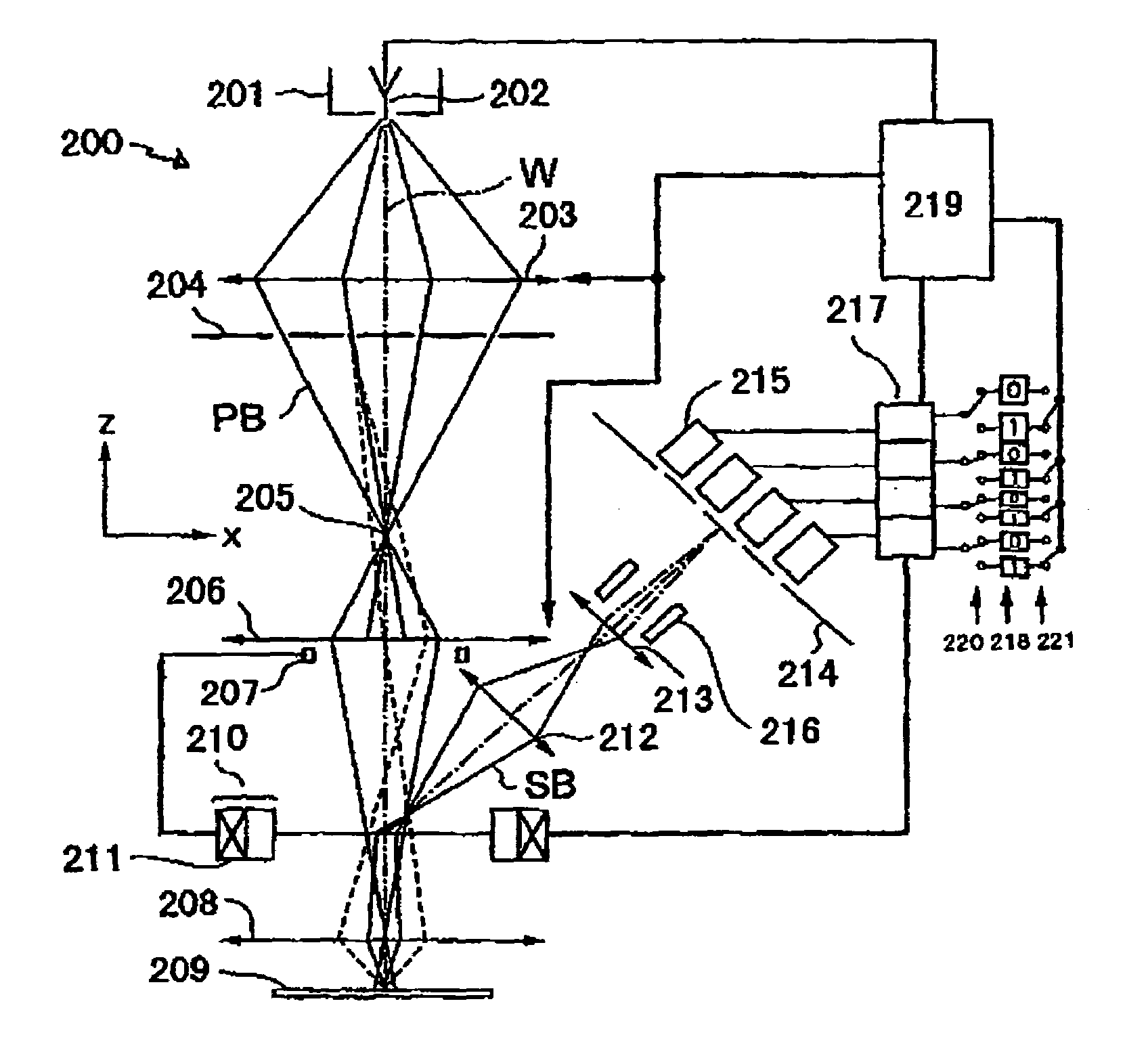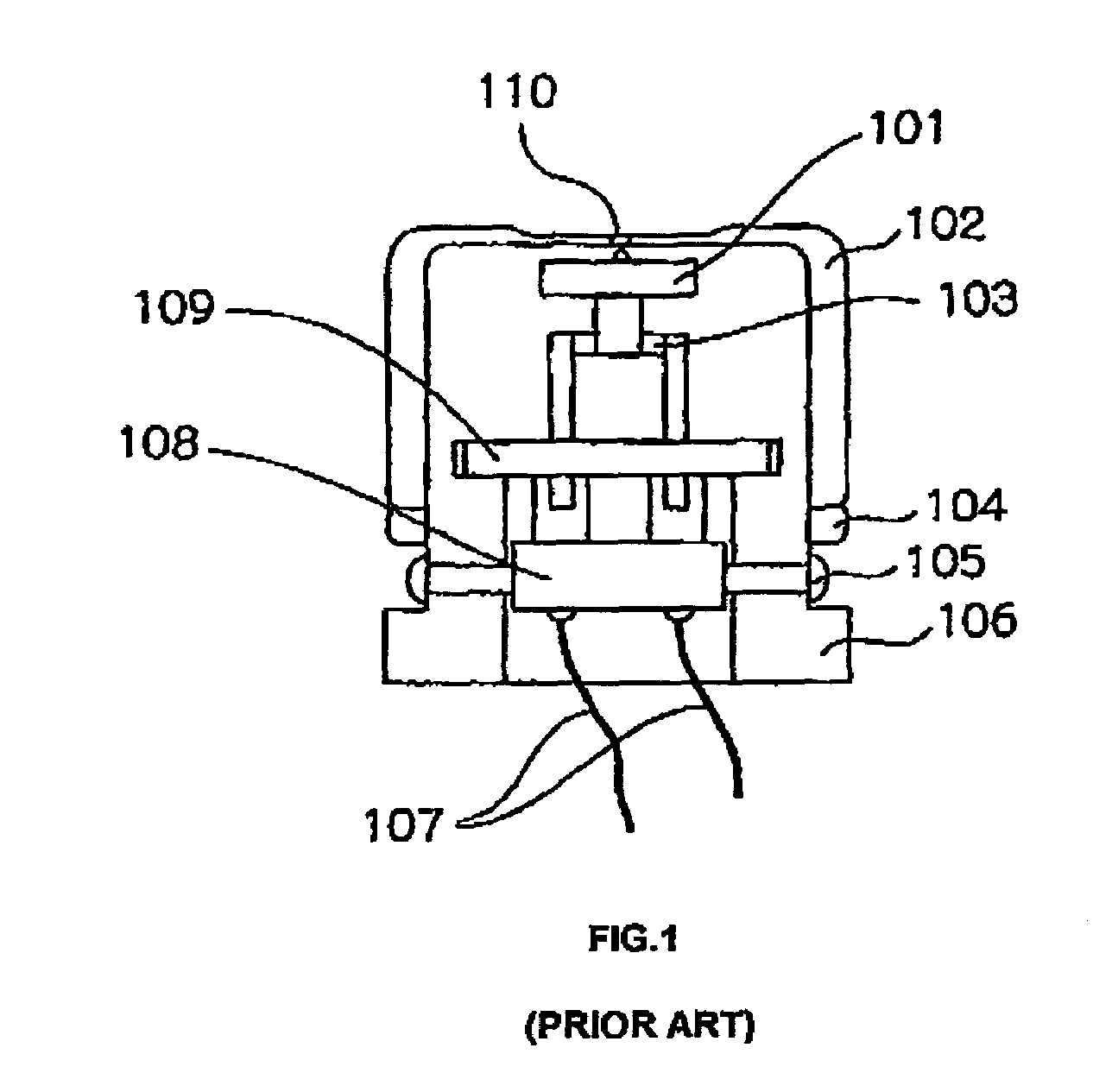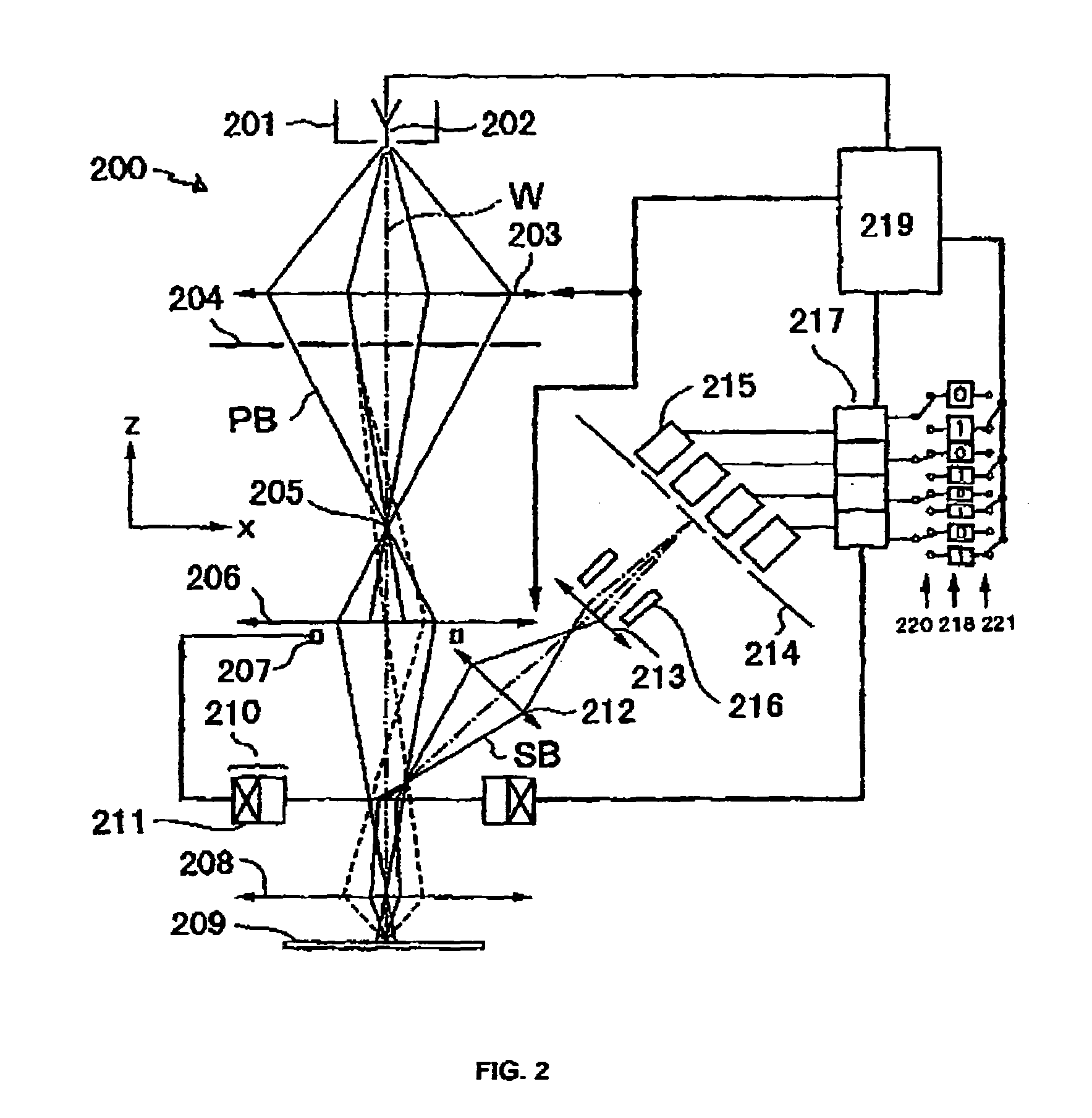Electron beam apparatus and device manufacturing method using same
- Summary
- Abstract
- Description
- Claims
- Application Information
AI Technical Summary
Benefits of technology
Problems solved by technology
Method used
Image
Examples
first embodiment
[0050]In the following, several embodiments of an electron beam apparatus according to the present invention will be described with reference to the drawings. FIG. 2 is a diagram schematically illustrating the electron beam apparatus according to the present invention. In FIG. 2, the electron beam apparatus 200 comprises an electron gun 201 as an electron beam source. An electron beam emitted from an emitter 202 of the electron gun 201 is converged by a condenser lens 203 to form a cross-over at a point 205.
[0051]A first multi-aperture plate 204 having, for example, four apertures is disposed below the condenser lens 203. The four apertures of the first multi-aperture plate 204 are formed along the circumference of the first multi-aperture plate 204. Therefore, the electron beam emitted from the electron gun 201 is irradiated to the first multi-aperture plate 204 to form four primary electron beams PB about an optical axis W.
[0052]In this way, in this embodiment, the electron gun 20...
second embodiment
[0071]FIG. 6A is a diagram schematically illustrating the electron beam apparatus according to the present invention. In FIG. 6A, electron beams emitted from an electron gun 601 of the electron beam apparatus 600 are converged by a condenser lens 602 to form a cross-over at a point 604.
[0072]Below the condenser lens 602, a first multi-aperture plate 603 having a plurality of apertures is disposed orthogonal to the optical axis W, for forming a plurality of primary electron beams. Each of the primary electron beams formed by the first multi-aperture plate 603 is reduced by a reducing lens 605, focused on and projected onto a point 606, and then focused on a sample 608 by an objective lens 607. A plurality of primary electron beams exiting from the first multi-aperture plate 603 are deflected by a deflector 609 disposed between the reducing lens 605 and objective lens 607 to simultaneously scan on the surface of the sample 608.
[0073]For eliminating the influence of field curvature abe...
PUM
| Property | Measurement | Unit |
|---|---|---|
| Thickness | aaaaa | aaaaa |
| Electric field | aaaaa | aaaaa |
Abstract
Description
Claims
Application Information
 Login to View More
Login to View More - R&D
- Intellectual Property
- Life Sciences
- Materials
- Tech Scout
- Unparalleled Data Quality
- Higher Quality Content
- 60% Fewer Hallucinations
Browse by: Latest US Patents, China's latest patents, Technical Efficacy Thesaurus, Application Domain, Technology Topic, Popular Technical Reports.
© 2025 PatSnap. All rights reserved.Legal|Privacy policy|Modern Slavery Act Transparency Statement|Sitemap|About US| Contact US: help@patsnap.com



